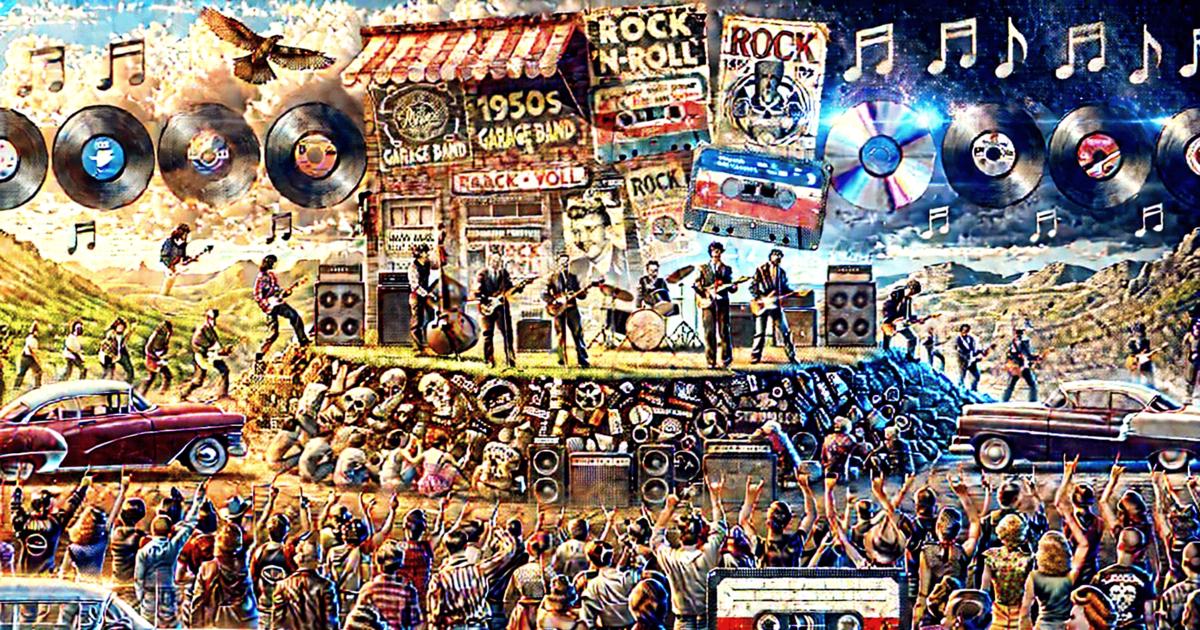What Is Rock Music? Origins, Styles and Impact
Rock music is one of the most recognized and influential genres in modern popular culture. To understand what makes it stand out, we need to look at its roots, musical structure, and the impact it has had on society. This article will walk you through its origins, key characteristics, evolution across decades, and the cultural significance that has kept it alive for over seventy years.
📌 Viberate Analytics: Professional music analytics suite at an unbeatable price: $19.90/mo. Charts, talent discovery tools, plus Spotify, TikTok, and other channel-specific analytics of every artist out there.
The Origins of Rock Music
Rock music began in the United States and the United Kingdom during the 1950s. It emerged from a mixture of rhythm and blues, country, and early rock and roll. Artists like Chuck Berry, Little Richard, and Elvis Presley are often credited with shaping the genre’s foundation. Their energetic performances, use of electric instruments, and catchy rhythms laid the groundwork for what rock would become.
The style quickly attracted a large youth audience. It represented something different from the mainstream pop of the time, offering energy, rhythm, and themes that resonated with younger generations. This combination of innovation and rebellion helped rock music gain momentum and spread rapidly across the world.
Core Elements of Rock
At the heart of rock music are its instruments and rhythm. The electric guitar is the most recognizable sound of the genre. From sharp riffs to extended solos, it has shaped how people identify rock songs. Supporting the guitar is the bass guitar, which drives the low end and creates depth, and drums, which provide the strong backbeat that defines the groove of most rock tracks. Vocals, often powerful and emotionally charged, carry the message of the song, while keyboards and synthesizers are sometimes added to expand the sound.
The rhythm is usually built on a 4/4 time signature with a strong emphasis on the backbeat. This creates the driving pulse that listeners associate with rock. The lyrics are equally important. Themes often revolve around love, rebellion, freedom, politics, and social issues. These messages connect strongly with
audiences, making rock more than entertainment — it becomes a form of expression.
The sound of rock emphasizes amplified instruments, giving it a bold and energetic quality. Guitar riffs and rhythmic sections push the music forward, while dynamic performances make it stand out in live shows.
Historical Development
The 1950s marked the beginning of rock with early pioneers like Chuck Berry and Little Richard, who created the energetic and danceable sounds that defined the era. Elvis Presley added a charismatic stage presence that helped bring the genre into the mainstream.
The 1960s brought a cultural explosion. Rock expanded through bands like The Beatles, The Rolling Stones, and The Who. This period is often seen as one of the most important in shaping youth culture. Rock music became the soundtrack for social change, addressing political movements, civil rights, and shifting cultural values.
By the 1970s and 1980s, rock had grown into a collection of subgenres. Hard rock bands like Led Zeppelin and Deep Purple explored heavier sounds. Punk rock, with acts like The Ramones and The Sex Pistols, emphasized simplicity, speed, and raw energy. Heavy metal pushed intensity further, giving rise to bands such as Black Sabbath and Iron Maiden. Each subgenre contributed to expanding what rock music could represent.
In the 1990s and 2000s, alternative rock, grunge, and indie rock gained popularity. Bands like Nirvana, Pearl Jam, and Radiohead challenged mainstream norms while continuing to connect with audiences who sought authenticity and creativity. Indie rock in particular emphasized independent production and experimentation, further diversifying the genre.
Cultural Impact
Rock music is more than a genre — it is a cultural movement. Since its beginnings, it has influenced how people dress, think, and identify with social causes. In the 1960s and 70s, it became closely tied to counterculture and protest movements. Festivals like Woodstock symbolized not just music, but a generational shift in values.
Fashion trends, from leather jackets and ripped jeans to hairstyles and accessories, were often inspired by rock musicians. The rebellious image became part of youth identity around the globe. Even outside of the music industry, rock’s influence reached literature, film, and art, shaping creative expression in countless forms.
Rock also changed how live performances were experienced. Large stadium shows, elaborate stage designs, and high-energy concerts set new standards for music entertainment. The idea of a band connecting directly with an audience through a powerful live performance became one of the defining aspects of the genre.
Rock Music in Modern Times
Today, rock continues to play an important role in popular music, even as genres like hip hop and electronic music dominate mainstream charts. Many classic rock bands remain active, while new artists continue to experiment with its sound. Rock festivals and concerts still draw massive crowds, and the genre maintains a strong following across generations.
Its adaptability is one reason for its longevity. Rock has absorbed influences from other genres while keeping its core elements intact. From bluesy guitar-driven songs to experimental indie projects, rock’s ability to evolve ensures it remains relevant.
Conclusion
So, what is rock music? At its core, it is a genre defined by electric instruments, strong rhythms, and energetic performances. It began in the 1950s with pioneers who combined rhythm and blues, country, and rock and roll into something new. Over decades, it evolved into countless subgenres, influencing culture, fashion, politics, and identity worldwide.
Rock music is not just about sound — it is about expression, rebellion, and connection. It continues to inspire musicians and audiences alike, proving that even after more than seventy years, its spirit is still alive.
Source of music data: Viberate.com

Premium music analytics, unbeatable price: $19.90/month
11M+ artists, 100M+ songs, 19M+ playlists, 6K+ festivals and 100K+ labels on one platform, built for industry professionals.




